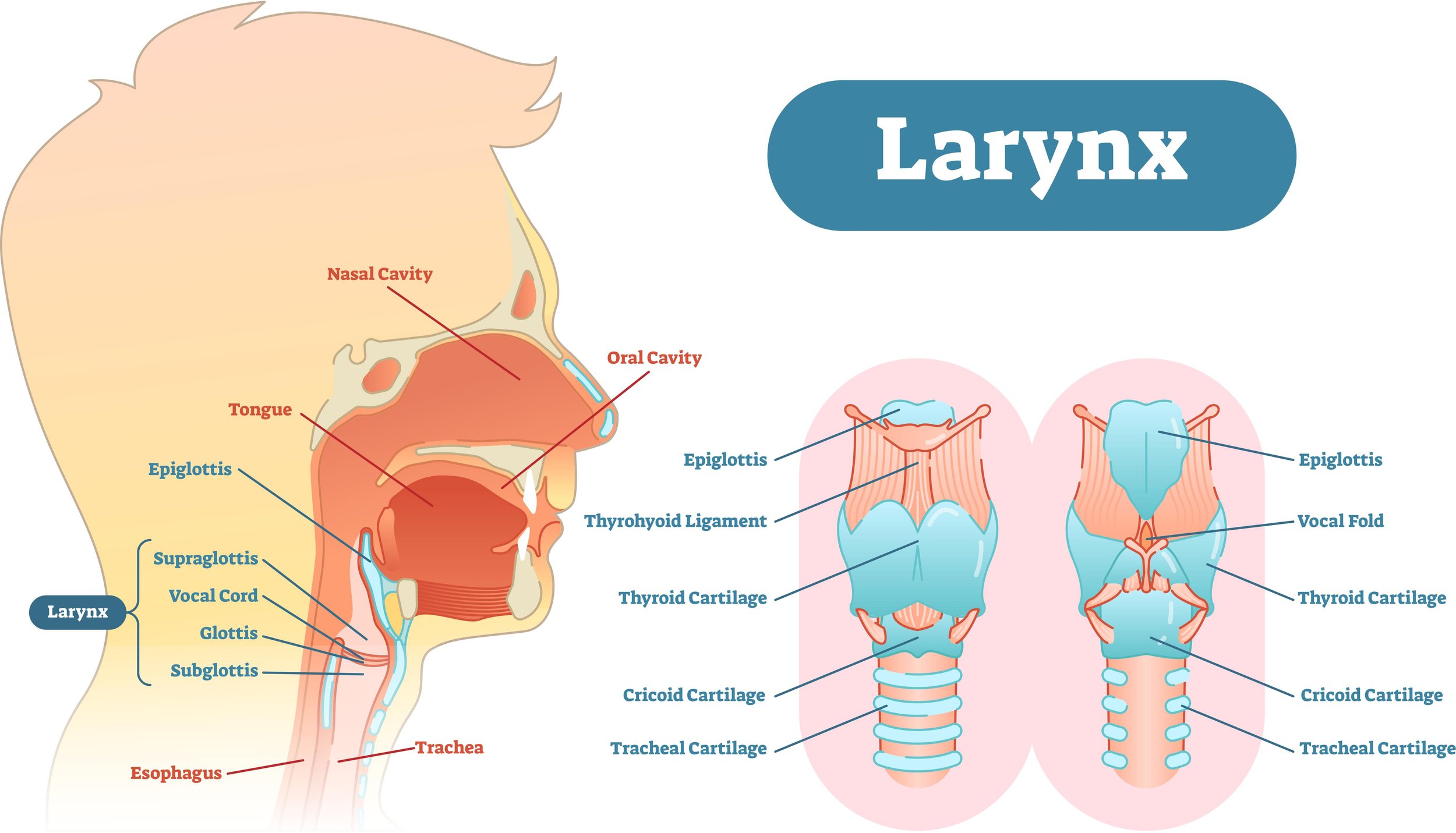How to Finally Understand Vocal Anatomy and Resonance [Building Blocks of Vocal Feminization Part 2/5]
Resonance! Resonance! Resonance!
Resonance is always part of the conversation when we’re talking about vocal feminization. It’s the bell of the ball, and for good reason!
Resonance plays a huge role in the gender perception of the voice, and it can be a little hard to understand.
So if you’re a beginner in vocal feminization, or if you’ve been at it for a while, but haven’t quite grasped the concept, this blog is for you!
Below, I describe what resonance is, why it affects gender perception, and give you some exercises to start changing your resonance.
What is resonance?
The tone color or timbre of the voice is a result of resonance. Every space has a natural frequency. So when a sound travels through a space, it will take on the qualities of the frequency of the space.
Larger spaces have lower frequencies, resulting in darker sounds, and smaller spaces have higher frequencies, resulting in brighter sounds.
For instance, if you blow over a water bottle with more water in it, and thus less space, the sound will be higher. If you take a sip of water, so there is more space, the sound will be lower.
The same is true with the voice.
When air passes through our vocal cords, they vibrate and create a buzzing sound. That sound is sent through the vocal tract. If the vocal tract is larger, we’ll get a darker sound. If the vocal tract is smaller, we’ll get a brighter sound.
How does this apply to vocal feminization?
As described in The Voice Book for Trans and Non-Binary People by Matthew Mills and Gillie Stoneham, folks assigned male at birth have vocal tracts that are 10-20% larger than folks assigned female at birth.
Larger spaces, and larger vocal tracts, produce darker sounds. Darker sounds are more masculine perceived.
So, for vocal feminization, the aim is to create a smaller vocal tract in order to achieve a brighter, more feminine perceived tone quality.
How to Change Your Resonance
We change the resonance by changing the size of the vocal tract. So let’s first talk about what that is!
The vocal tract is made up of the larynx, pharynx (throat), oral cavity, and nasal cavity.
Larynx
The larynx is a structure of cartilages in the throat. The vocal folds (or vocal cords) are inside of these cartilages.
Air passes through the vocal folds and as they vibrate, and a buzzing sound is produced. In order for the vocal folds to produce different pitches, they have to change length. The cartilages of the larynx move to lengthen or shorten the vocal folds, thus changing the pitch.
Pharynx
The larynx can also move higher or lower in the throat, or pharynx. When the larynx is lower, the vocal tract is longer, giving you a darker vocal quality. When the larynx is lifted, the vocal tract is shorter, giving you a brighter quality. In order for the larynx to lift, the pharynx gets smaller, as well, creating less space.
Oral Cavity
Inside the mouth, the tongue changes the resonance. The tongue works really hard as we speak, changing position constantly. This change in tongue position is the reason we’re able to create different vowel sounds.
Try saying the vowel “oh”. Notice your tongue flat at the bottom of your mouth and all of the open space. This type of vowel, because there’s so much open space in the mouth, gives us a dark, masculine quality.
Now try saying the vowel “ee”. Notice how the back of your tongue lifts and how little room there is in your mouth now. This vowel gives us a bright, feminine quality.
Nasal Cavity
There are certain sounds that only travel through our nasal cavity, not through our mouths.
These sounds are “mm”, “nn”, and “ng”. Try to make any one of these sounds and then plug your nose. You’ll notice that the sound completely stops. All that sound is only going through the nasal cavity! The position of the soft palate determines how much of the sound goes through the mouth or the nasal cavity. The soft palate is the soft, fleshy tissue at the top of your mouth, all the way in the back.
When the soft palate is lowered, sound travels through the nasal cavity. When it’s lifted, sound can travel through the oral cavity.
Feminine Resonance Exercise
Big Dog/Little Dog
In this exercise, we’re going to use imitation to change the resonance.
Fully relax your jaw and tongue, as though you’re saying “aw”, and pant like a big german shepherd on a hot day. Imagine a ping pong ball in your mouth to keep the space nice and open.
Notice how flat your tongue is at the bottom of your mouth. Touch your larynx and note the position. Note the position of your lips. And finally, notice what the breath sounds like as it travels through your vocal tract. This is a dark, more masculine perceived resonance position.
Imagine you are a small dog, as though you’re saying “ee”, on a hot day and pant.
Notice how your tongue lifts, creating less space in the mouth. Touch your larynx and note the higher position. Note the different, more open position of your lips. Finally, notice how the breath sounds as it travels through your vocal tract - brighter, lighter, more feminine perceived resonance position!
In each of these positions, try to say the days of the week. See what you notice about the change in sound quality and how it feels to speak that way.
Finding your own feminine resonance
As you practice resonance, it might feel very foreign to you at first. But lucky for you, practice makes progress!
Like anything that you work on in vocal feminization, it’s going to take time to make it a habit. And there are many different “gears” you can shift to create different sounds.
If you’re interested in learning more, sign up for my 8-Week Vocal Feminization Group Class, starting February, 2, 2024!

























